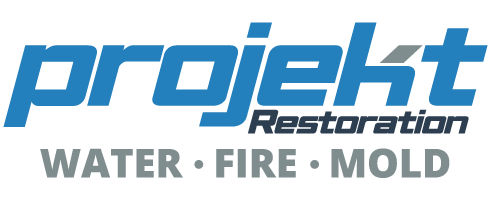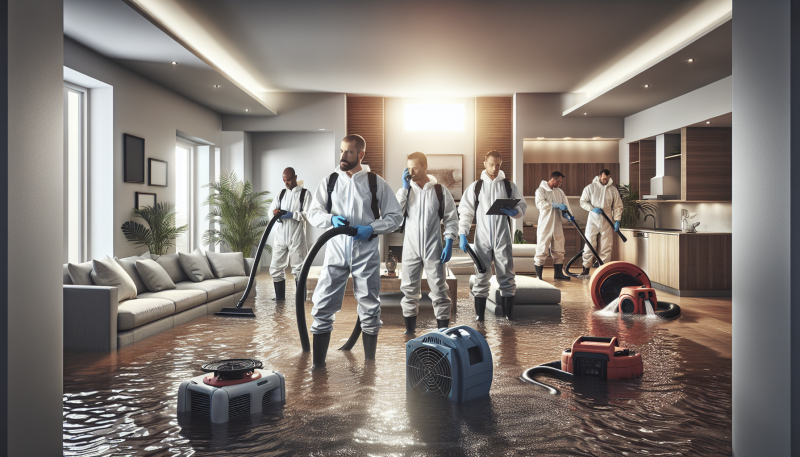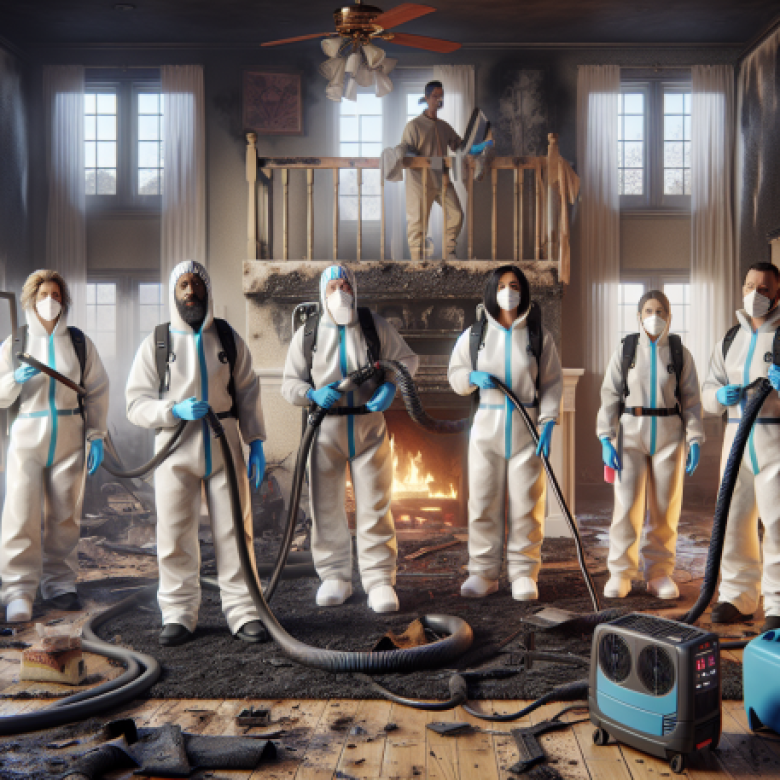If your home or business has suffered water damage, you’re probably wondering how long the restoration process will take. Time is crucial when dealing with water damage, as delays can lead to mold growth and structural issues. At [Projekt Restoration](https://www.projektrestoration.com/), we specialize in fast and efficient water damage restoration to get your property back to normal as soon as possible.
The duration of water damage restoration depends on the severity of the damage. Minor cases may take 24 to 72 hours to dry, while extensive damage requiring repairs can take several weeks. This article will break down the key factors affecting restoration time, including water category, damage extent, and drying techniques.
Every water damage situation is unique, and understanding the timeline helps set realistic expectations. Industry experts like the IICRC emphasize the importance of quick action to prevent further damage. So, let’s dive into the details and explore how long it really takes to restore your property after water damage!
Understanding Water Damage Restoration
Water damage restoration is the process of cleaning, drying, and repairing areas affected by water intrusion. It is essential to prevent further damage and restore the property to its original condition. Without immediate action, water can weaken structures, cause mold growth, and lead to costly repairs.
There are three main types of water damage. Clean water comes from sources like broken pipes or rainwater and poses minimal risk. Gray water contains contaminants from appliances or sinks, requiring proper treatment. Black water is the most hazardous, often originating from sewage backups or floodwaters, carrying harmful bacteria and toxins.
Ignoring water damage can lead to severe consequences. Moisture trapped in walls and floors weakens structural integrity, increasing the risk of collapse. Mold growth begins within 24 to 48 hours, affecting indoor air quality and causing health issues. Professional restoration services, including dehumidification and reconstruction, are crucial to restoring safety and preventing long-term damage. Addressing water damage promptly ensures a healthier environment and protects property value.
Factors That Affect Water Damage Restoration Time
The extent of the damage plays a crucial role in determining the restoration timeline. Minor leaks may take a few days, while extensive flooding can require weeks. The type of water involved also impacts the process. Clean water is easier to remove, while black water from sewage or flooding demands extensive decontamination.
The size of the affected area influences drying time. A single room dries faster than an entire house. Additionally, the materials impacted affect the duration. Porous materials like carpet and drywall absorb water quickly, requiring longer drying times. Hardwood floors may warp, adding extra restoration steps.
Response time is another critical factor. Immediate action reduces damage and speeds up recovery. Delays allow mold growth, increasing restoration complexity. Professional intervention with advanced equipment accelerates the process.
For properties in need of expert assistance, water damage restoration services ensure efficient recovery. Proper assessment and quick mitigation efforts prevent further structural issues.
Water Damage Restoration Process: Step-by-Step
Professionals begin with a thorough inspection to assess the extent of the damage. Using advanced tools like moisture meters and infrared thermal imaging, they identify affected areas. This step helps determine the best restoration approach.
Next, water removal starts immediately. High-powered pumps and vacuums extract standing water to prevent further damage. This process typically takes a few hours to a full day, depending on the severity.
Once the water is removed, drying and dehumidification begin. Industrial-grade fans and dehumidifiers eliminate excess moisture, preventing mold growth. This step can take several days to ensure complete dryness.
After drying, cleaning and sanitizing are essential. Professionals use antimicrobial treatments to disinfect surfaces and eliminate odors. Specialized cleaning techniques restore carpets, furniture, and other belongings.
Finally, the restoration phase begins. Damaged materials like drywall and flooring are repaired or replaced. In severe cases, full reconstruction may be necessary. This step ensures the property returns to its pre-damage condition.
How Long Does Water Damage Restoration Take?
The restoration timeline depends on the severity of the damage. Minor cases, such as small leaks, may take two to three days. Drying and dehumidification ensure no moisture remains. Moderate damage, like soaked carpets and drywall, can extend the process to a week. Structural drying and mold prevention become necessary.
Severe water damage, including flooding, may take several weeks. Extensive drying, dehumidification, and structural repairs are required. If mold develops, remediation adds more time. Professional services significantly reduce restoration time. Experts use advanced equipment to speed up drying and prevent secondary damage.
DIY methods often prolong the process. Without proper tools, moisture lingers, increasing the risk of mold. Professionals also handle content cleaning, salvaging valuable belongings. They assess hidden damage using specialized techniques.
Emergency response plays a crucial role. Quick action minimizes damage and shortens restoration time. Hiring experts ensures a faster, more efficient recovery. If you need immediate assistance, contact a trusted restoration company. For expert guidance, schedule a consulting session today.
Emergency Water Damage Restoration: What to Do Immediately
Discovering water damage requires immediate action. First, locate and shut off the water source if possible. This prevents further flooding and minimizes damage. Next, turn off electricity in the affected area to avoid hazards.
Quickly remove valuable items, documents, and electronics from the water-damaged space. Move furniture to a dry area to prevent further deterioration. If items are already wet, place them in a well-ventilated space for drying.
Standing water should be extracted using towels, mops, or a wet vacuum. Open windows and use fans to improve air circulation. Mold can develop within 24 hours, so drying the area fast is crucial.
Contact a professional restoration company immediately. Experts have the tools and experience to assess the damage and begin the restoration process. Delaying professional help can lead to structural issues and mold growth. For expert assistance, reach out to restoration specialists today.
If you need an estimate, use this damage assessment tool to understand potential costs. Acting quickly can prevent costly repairs and health risks.
The Role of Professionals in Water Damage Restoration
Hiring professionals ensures a thorough and efficient restoration process. DIY methods often lack the precision and expertise needed to address extensive water damage. Professionals use advanced techniques to assess the situation accurately, preventing costly mistakes. Their specialized equipment, such as industrial-grade dehumidifiers and infrared cameras, helps detect hidden moisture and accelerate drying. Without these tools, lingering moisture can lead to structural issues and mold growth.
Mold can develop within 24 to 48 hours if water damage isn’t handled correctly. Experts implement effective dehumidification strategies to eliminate excess moisture, reducing the risk of secondary damage. They also conduct thorough inspections to ensure no hidden pockets of water remain. This proactive approach prevents future complications and costly repairs.
Additionally, professionals streamline the restoration process, minimizing disruption to your home or business. Their experience allows them to handle everything from water extraction to reconstruction, ensuring a seamless recovery. If you’re dealing with water damage, consulting experts is the best way to restore your property safely and efficiently. For immediate assistance, reach out through the contact page and get expert help today.
Preventing Future Water Damage
Regular maintenance is key to avoiding costly water damage. Inspect plumbing and appliances frequently for leaks or wear. Replace old hoses on washing machines and dishwashers to prevent unexpected failures. Check under sinks and around toilets for moisture buildup.
Proper drainage protects your home from water intrusion. Clean gutters and downspouts regularly to prevent blockages. Ensure water flows away from the foundation by grading the soil correctly. Waterproof basements and crawl spaces to reduce the risk of seepage.
Installing water detection devices adds an extra layer of protection. These sensors alert homeowners to leaks before they cause significant damage. Place them near water heaters, sinks, and appliances for early detection. Smart leak detectors can even shut off the water supply automatically.
If water damage occurs, professional restoration is essential. Our water damage Fort Lauderdale team provides fast and effective solutions. For mold concerns, our Plantation mold removal experts ensure a safe and thorough cleanup. Taking preventive steps now can save time, money, and stress in the future.
Cost of Water Damage Restoration
Restoration costs vary based on several factors. The severity of the damage plays a crucial role. Minor leaks require less work, while extensive flooding demands more resources. The type of water also affects pricing. Clean water is easier to handle, but gray or black water requires specialized treatment. Additionally, the materials impacted influence costs. Hardwood floors, drywall, and carpets each have different restoration needs.
Insurance coverage can help reduce expenses. Policies often cover sudden water damage but may exclude gradual leaks. It’s essential to review your policy and file claims promptly. Working with professionals experienced in insurance claims can streamline the process.
For an accurate estimate, consider using a cost calculator. This tool provides a better understanding of potential expenses. If the damage is severe, additional services like reconstruction may be necessary. Acting quickly minimizes costs and prevents further structural issues.
Common Challenges in Water Damage Restoration
Restoring water damage comes with several challenges that can extend the process. One major issue is mold growth, which can begin within 24 to 48 hours. If left untreated, it spreads quickly, requiring extensive mold assessment and remediation. This adds time and cost to the restoration.
Structural damage is another concern. Water weakens walls, floors, and ceilings, sometimes leading to severe deterioration. In such cases, reconstruction may be necessary before the property is safe to use again. This step can significantly delay the process, especially if permits or inspections are required.
Insurance claims also slow down restoration efforts. Adjusters must assess the damage before approving repairs, which can take days or even weeks. Without approval, work may be delayed, leaving the property vulnerable to further damage.
Additionally, hidden moisture can complicate drying efforts. Even after visible water is removed, trapped moisture in walls or flooring can cause long-term issues. Proper dehumidification is essential to prevent future problems. Addressing these challenges efficiently ensures a smoother restoration process.
Frequently Asked Questions (FAQs)
Water damage can lead to mold growth in as little as 24 to 48 hours. High humidity and poor ventilation accelerate the process. Acting quickly is crucial to prevent further damage.
Staying in your home during restoration depends on the severity of the damage. Minor issues may allow you to remain, but extensive damage may require temporary relocation.
If water damage occurs in your basement, remove valuables and avoid electrical hazards. Contact professionals immediately to assess and mitigate the damage.
Homeowners insurance may cover water damage restoration, but coverage depends on the cause. Sudden incidents like burst pipes are often covered, while gradual leaks may not be.
To ensure walls and floors are completely dry, use moisture meters or seek professional infrared thermal imaging. Hidden moisture can lead to mold and structural issues.
Signs of hidden water damage include musty odors, peeling paint, and warped flooring. Discoloration on walls or ceilings may also indicate moisture problems.
Handling water damage restoration alone is risky. Professionals use advanced equipment for proper dehumidification and drying. DIY efforts may leave hidden moisture behind.
Choose a reliable restoration company by checking reviews, certifications, and experience. A trusted provider offers comprehensive services, including reconstruction, to restore your home fully.





